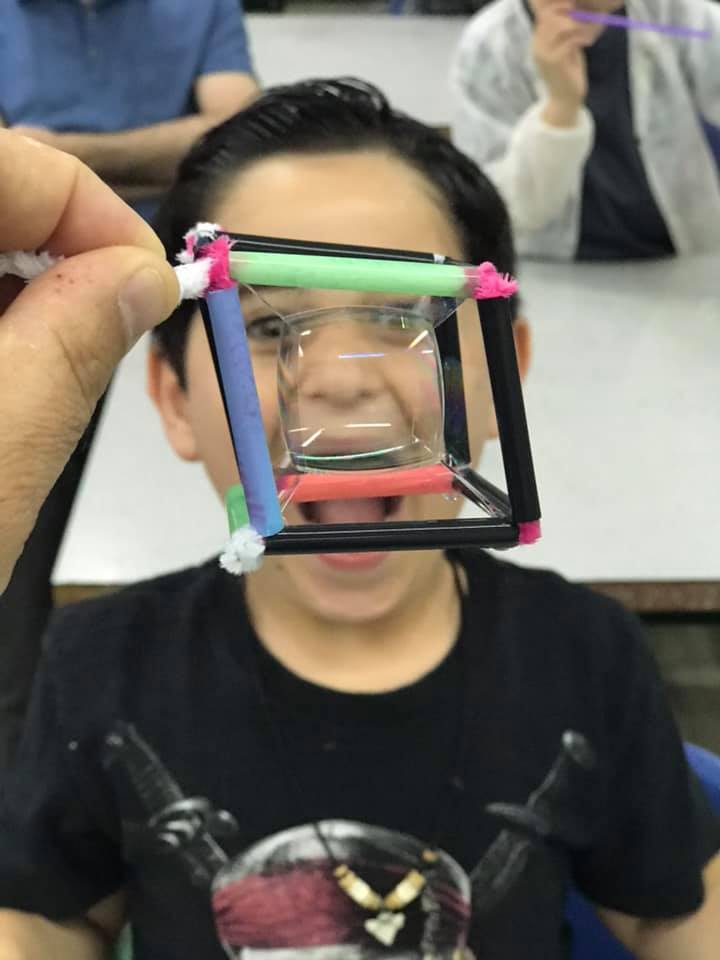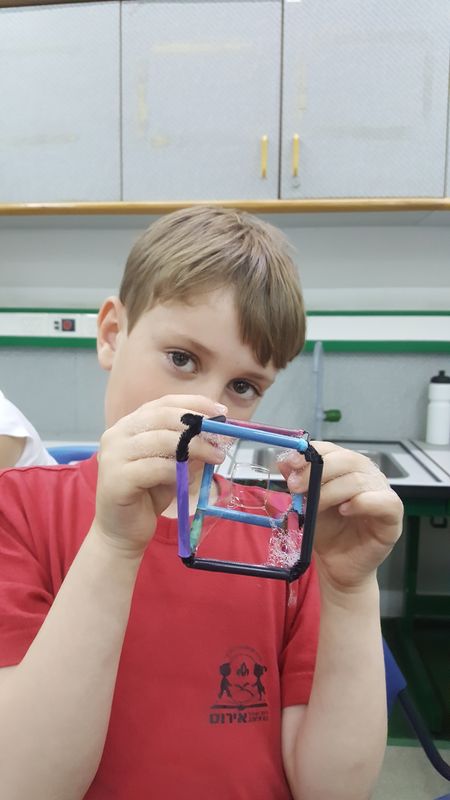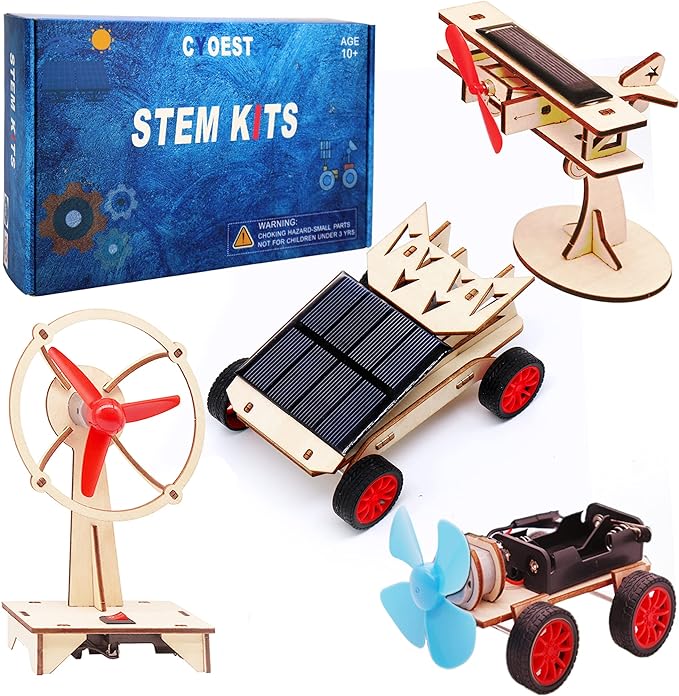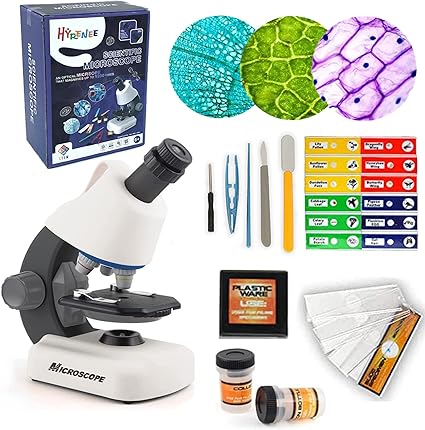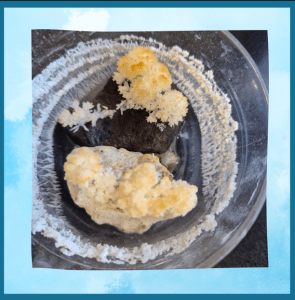Square soap bubbles
Discover the intriguing world of square bubbles:
Uncover the science behind this captivating phenomenon and learn the secrets of square-shaped bubbles. Get ready to learn, experiment, and be amazed as we unlock the mysteries of these extraordinary geometric bubbles!
What you need:
- A big bowl of water
- Dish soap
- 4 pipe cleaners
- 4 drinking straws
What to do?
Cut 3 of the straws to 4 pieces each.
Make a cube from the pipe cleaners and straws.
In a large bowl, prepare a soap solution in a ratio of 9:1 (every half cup of dish soap, 4.5 cups of water).
Dip the cube in the soap solution (make sure all sides are covered with soap).
Dip the fourth straw in the solution and gently blow into the center of the cube.
Ta Daaa! A square bubble
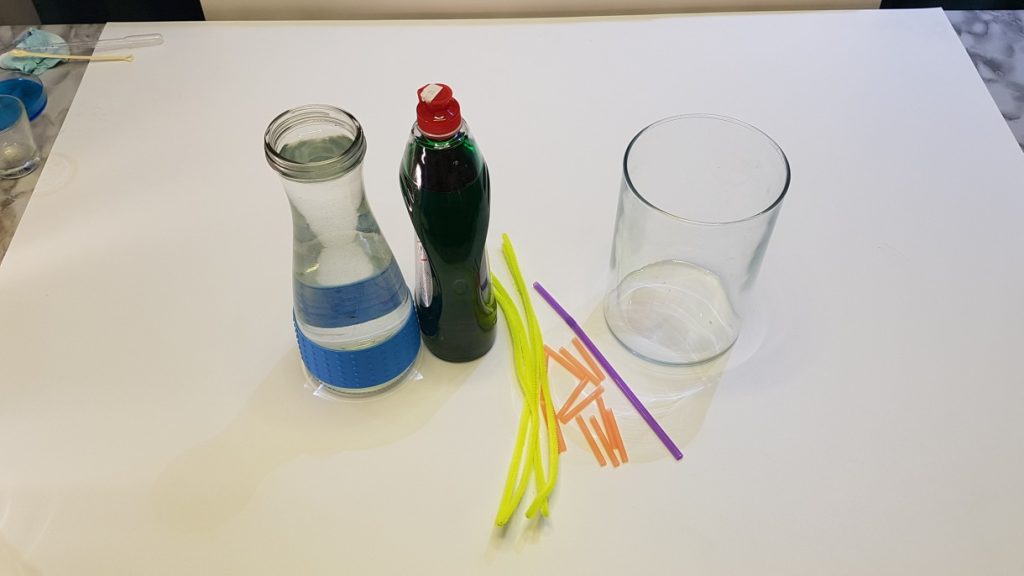
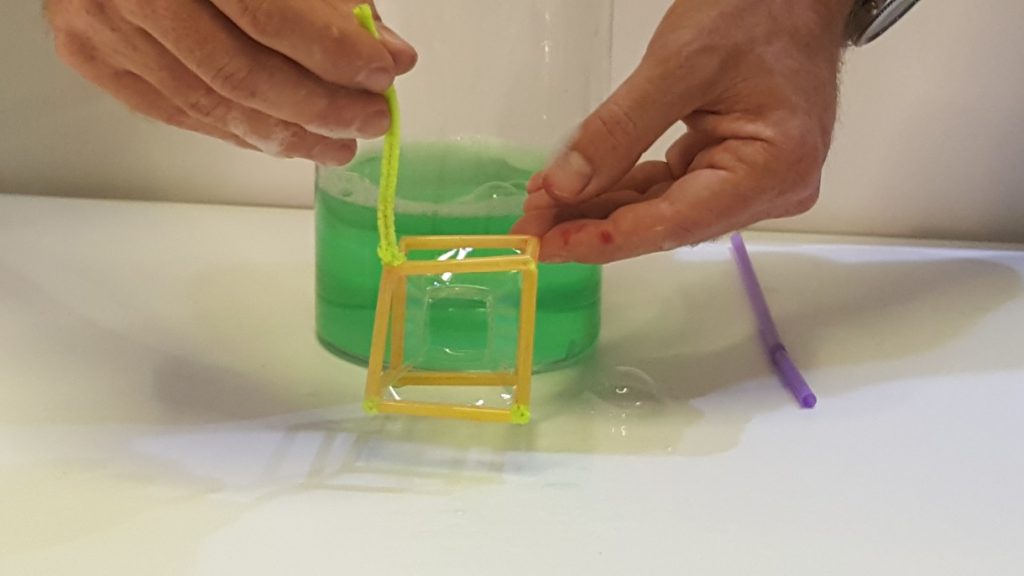
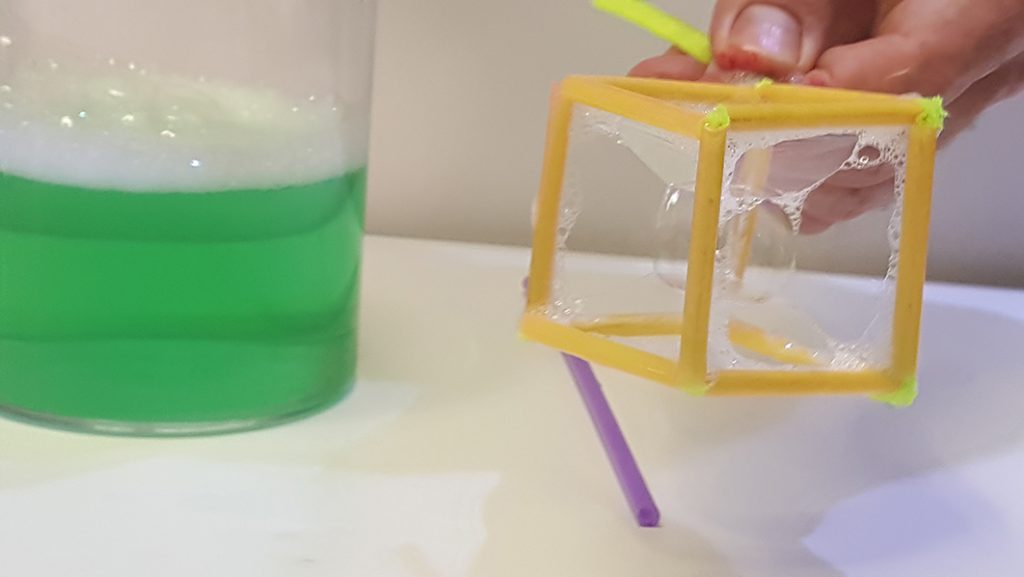
What is happening?
Between the water particles there are forces called surface tension. These attractive forces cause the water particles to adhere to each other and form spherical water drops. You can imagine it as a ball made up of sticky rice, where the rice grains are the water particles.
To create a soap bubble, the water needs to form thin surfaces and not round drops of water. The role of the soap is to weaken the forces of attraction between the water particles.
When these forces of attraction weaken, the water particles stick less to one another and it is possible to get the thin surface needed to create a soap bubble.
Soap bubbles always aim to be round.
Why is this so? The reason is that naturally the bubble seeks to create the most stable structure. The area in the bubble from which the water evaporates is the surface area of the bubble. The sphere is the most efficient and stable shape because in a sphere, the ratio of surface area to volume is the smallest. (If we take a cube or any other shape of a certain volume, its surface area will be larger than a sphere of the same volume).
In our case, the frame of the cube allows the rare creation of a square soap bubble!
Checkout my EXPERIMENTS page for more great activities!
We’d love to showcase your creativity!
Share pictures of your experiments with us, and together, we can inspire young scientists everywhere!
